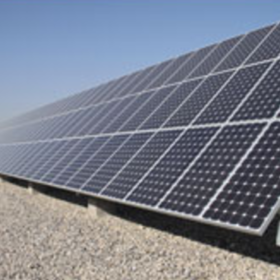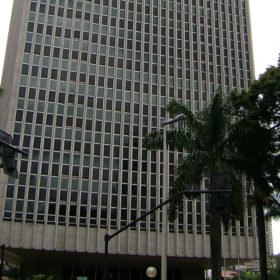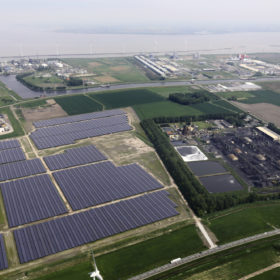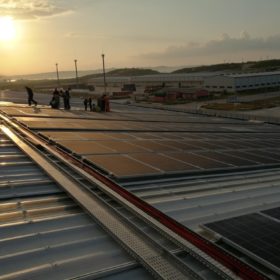Blockchain project powered by 45 MW of solar launched in Spain
The project, expected to be finalized by April 2019, is being planned by Spanish blockchain platform, CryptosolarTech. A big cryptocurrency mining server, relying on 3,000 servers to mine cryptocurrencies, will be located near Malaga, in the southernmost part of Spain. Ten solar projects totaling 45 MW will provide the necessary power, the estimated aggregate investment of which is €42.8 million.
Swedish scientists develop new method to reduce defects in organic solar cells
The researchers found that printed solar cells achieved a better performance when they used an active polymer material as glue.
Algeria to tender up to 170 MW of wind and solar
Through the tender, the Algerian government aims to deploy 50 MW of renewable energy generation capacity in the south of the country – where local power utility, Sonelgaz is currently still relying on diesel generators for electricity production – and another 100 MW to 120 MW at other unspecified locations.
Solargiga reports decline in shipments, turnover due to lower ASPs
In the first quarter of this year, the Chinese solar manufacturer registered a 34% drop in revenue, while quarterly shipments also declined around 19% year-on-year, to 462 MW.
Brazil’s power provider Cemig to hold wind, solar auction on May 16
The auction is intended to replace the loss of the concessions for four hydropower plants, which represented 30% of the company’s power generation capacity. Selected projects will be granted a 20-year PPA.
Dutch transmission system operators make room for more solar
Netherlands-based TenneT and Enexis are implementing a series of measures to prepare their networks for more solar power in the regions of Groningen and North Drenthe.
Cuba introduces net metering for solar, renewables
According to local association, Cubasolar, the Cuban government introduced Law No. 345 at the end of March. The new rules will come into force after their publication in the country’s official journal.
Ukraine’s operational solar capacity reaches 841 MW
According to new provisional numbers released by the Ukrainian government, around 100 MW of new solar PV power stations were connected to the country’s grid in the first quarter of 2018.
Sweden increases 2018 solar budget by another $20 million
Solar rebates were increased, from covering 20% of the cost of buying and installing a rooftop PV system, to 30%, starting from last January. Overall, the Swedish government will grant around US$80 million in incentives this year.
France preps tender for 300 MW PV plant aimed at to-be-decommissioned nuclear site
The giant solar plant is expected to improve power supply in the department of Haut-Rhin, where the country’s oldest nuclear power plant, located in Fessenheim, on the border with Germany, will be closed by 2020.










